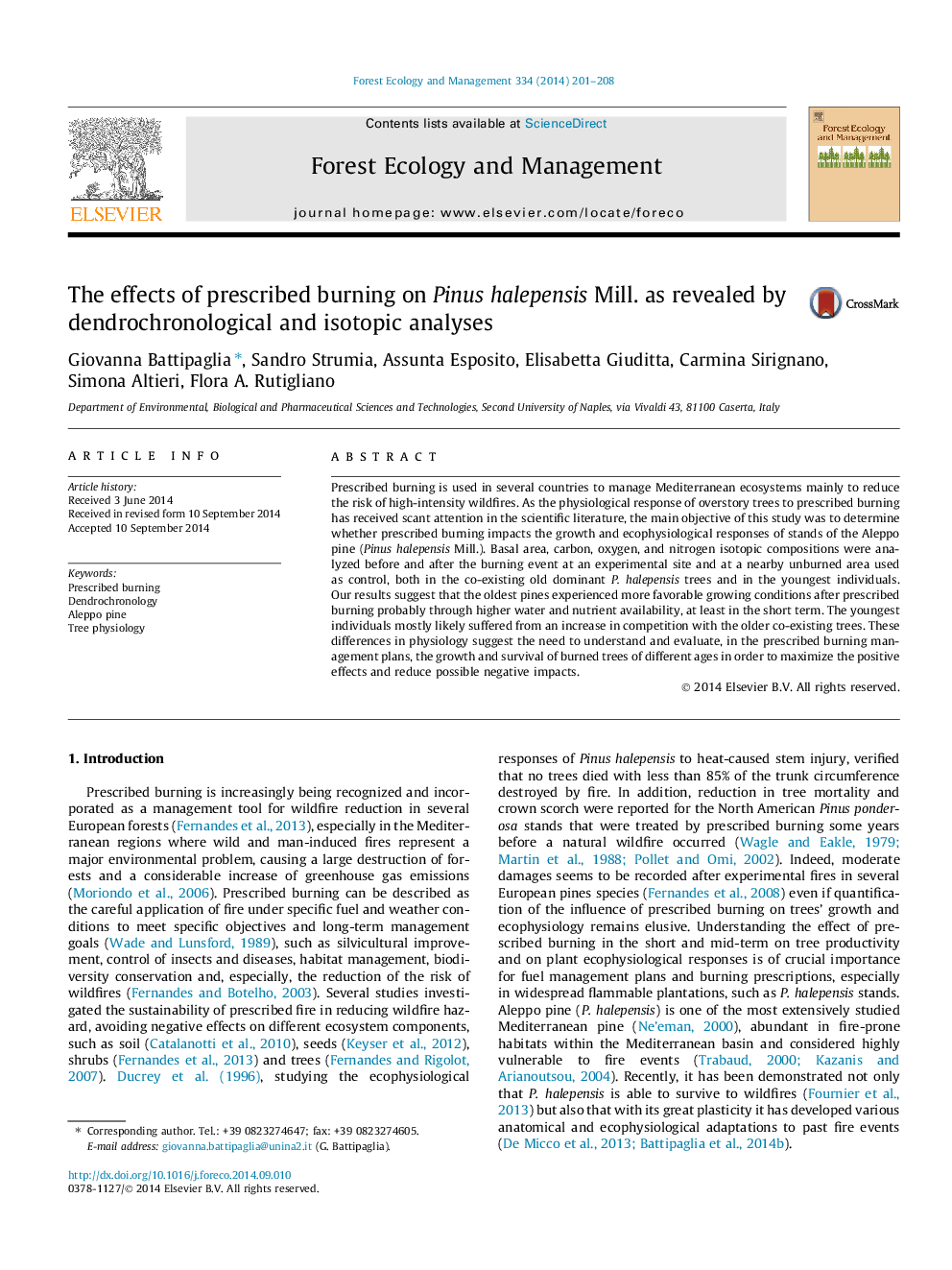| Article ID | Journal | Published Year | Pages | File Type |
|---|---|---|---|---|
| 6543134 | Forest Ecology and Management | 2014 | 8 Pages |
Abstract
Prescribed burning is used in several countries to manage Mediterranean ecosystems mainly to reduce the risk of high-intensity wildfires. As the physiological response of overstory trees to prescribed burning has received scant attention in the scientific literature, the main objective of this study was to determine whether prescribed burning impacts the growth and ecophysiological responses of stands of the Aleppo pine (Pinus halepensis Mill.). Basal area, carbon, oxygen, and nitrogen isotopic compositions were analyzed before and after the burning event at an experimental site and at a nearby unburned area used as control, both in the co-existing old dominant P. halepensis trees and in the youngest individuals. Our results suggest that the oldest pines experienced more favorable growing conditions after prescribed burning probably through higher water and nutrient availability, at least in the short term. The youngest individuals mostly likely suffered from an increase in competition with the older co-existing trees. These differences in physiology suggest the need to understand and evaluate, in the prescribed burning management plans, the growth and survival of burned trees of different ages in order to maximize the positive effects and reduce possible negative impacts.
Related Topics
Life Sciences
Agricultural and Biological Sciences
Ecology, Evolution, Behavior and Systematics
Authors
Giovanna Battipaglia, Sandro Strumia, Assunta Esposito, Elisabetta Giuditta, Carmina Sirignano, Simona Altieri, Flora A. Rutigliano,
